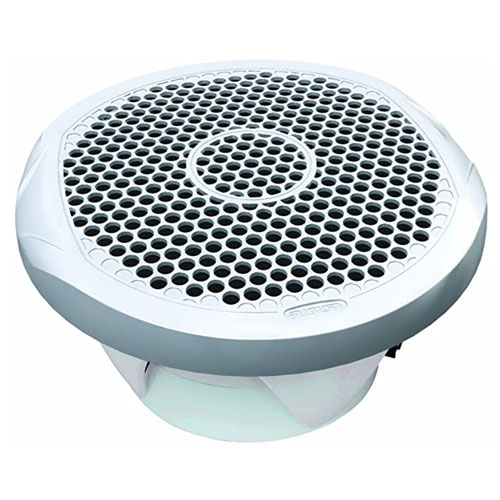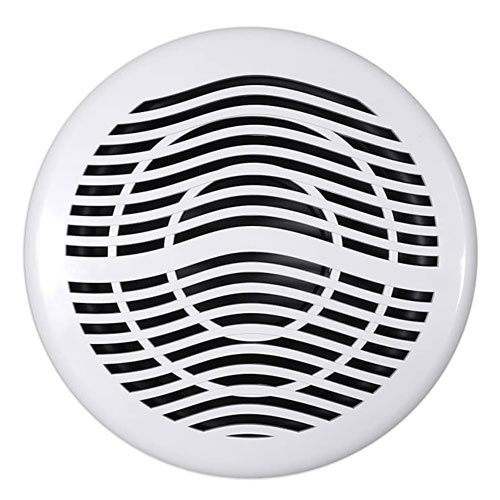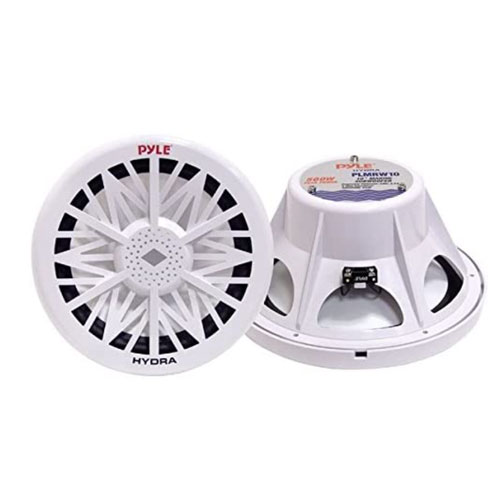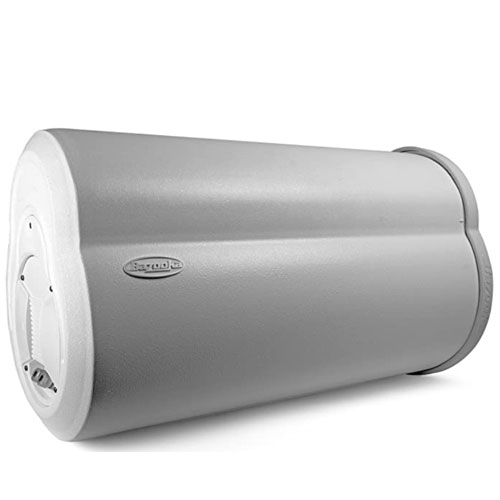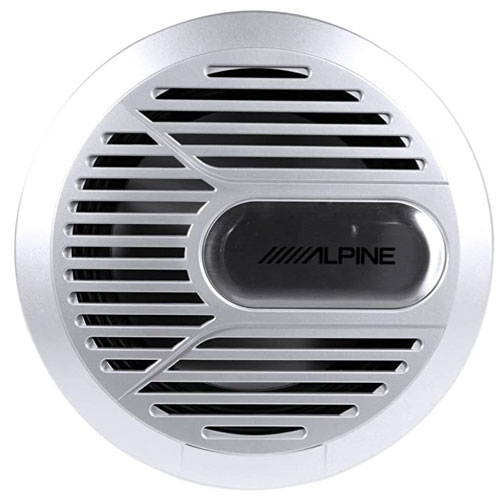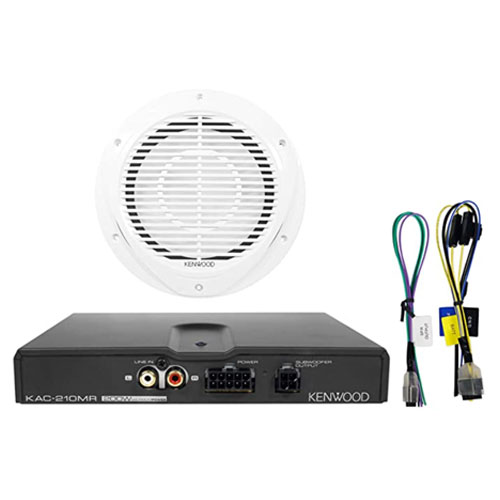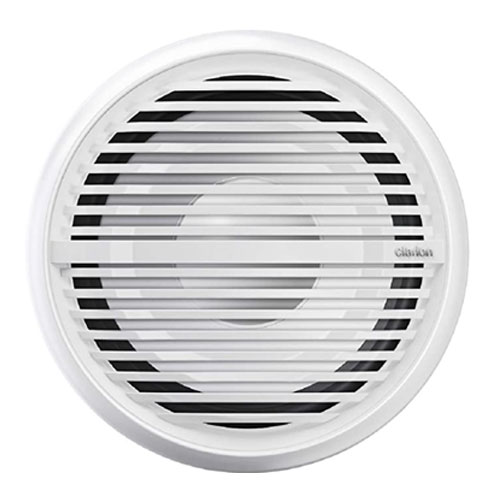
If you enjoy listening to high-quality music while exploring the water, a marine subwoofer is an unavoidable part of the setup. By boosting your audio system with rich bass, the best marine subwoofer will completely change your audio experience.
When choosing a subwoofer, two things are important to consider – sound quality and durability in marine conditions. With this in mind, we created our marine subwoofer reviews to discuss all the pros and cons of the best boat subwoofers, so you can equip your boat with a bass that you can really feel.
OUR TOP PICK
Fusion MS-SW10
- Stand Out Features - Why We Love It
- Fully adapted to use in a marine environment
- Large magnet improves the woofer power
- 88-decibel sensitivity boosts performance
- Excellent compatibility with FM-402 amplifier
Diameter: 10 inches
Peak Power: 400W
RMS: 200W
Magnet Weight: 60oz
Impedance: 4 ohms
Frequency Response: 30Hz-2kHz
EDITORS CHOICE
Rockville MS10LW Free Air
- Stand Out Features - Why We Love It
- Built-in white LEDs look great at night
- Highest power output on the list
- Unbreakable basket made of molded ABS plastic
- Equipped with a double-stacked 80-ounce magnet
Diameter: 10 inches (12 also available)
Peak Power: 2400W
RMS: 600W
Magnet Weight: 80oz (double-stacked)
Impedance: 4 ohms
Frequency Response: 30Hz-4Khz
BEST VALUE
Pyle PLMRW8 Hydra Waterproof
- Stand Out Features - Why We Love It
- Excellent low-frequency bass reproduction
- Fully resistant to splashes on the water
- Model is available in 3 different sizes
- Very affordable considering the quality
Diameter: 8 inches (10 and 12 also available)
Peak Power: 400W
Magnet Weight: 40oz
Impedance: 4 ohms
Frequency Response: 35 Hz-3.5kHz
Bazooka MBT1014
- Stand Out Features - Why We Love It
- Unique bazooka shape makes setup more convenient
- Stainless steel hardware for corrosion-resistance
- Equipped with Velcro-reinforced mounting straps
- Casing is protected against UV damage
Diameter: 10 inches
Peak Power: 200W
RMS: 100W
Magnet Weight: 36oz
Impedance: 4 ohms
Frequency Response: 39-1000Hz
Alpine SWR-M100 Type-R
- Stand Out Features - Why We Love It
- Great complimentary subwoofer for any sound system
- High output bass (300 watts RMS) feels great on the water
- Strong polypropylene cone ensures durability
- High-Amplitude Multi-Roll (HAMR) surround sound
Diameter: 10 inches
Peak Power: 900W
RMS: 300W
Impedance: 4 ohms
Frequency Response: 35-1000Hz
Bazooka MBTA10250D
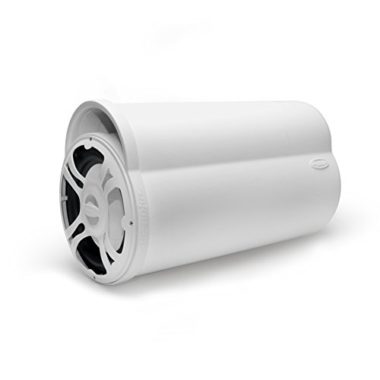
- Stand Out Features - Why We Love It
- Chrome-plated UMS brackets provide a stylish look
- Model is available in two sizes (8 and 10 inches)
- Velcro-reinforced straps for easy mounting
- Certified resistant to fog, salt, and UV rays
Diameter: 10 inches
Peak Power: 250W
Impedance: 4 ohms
Frequency Response: 35Hz-250Hz
- Stand Out Features - Why We Love It
- Kac-210mr amplifier included in the package
- Dual voice coils for improved performance
- Durable pearl mica polypropylene cone
- RCA speaker-level input on the woofer
Diameter: 10 inches
Peak Power: 200W
RMS: 50-200W
Magnet Weight: 24.6oz
Impedance: 2 x 1.5 ohms (dual coils)
Frequency Response: 80Hz
Clarion CMG2512W
- Stand Out Features - Why We Love It
- Santoprene rubber surround improves the bass quality
- High-quality woofer cone (mica-injected polypropylene)
- Can be used with or without a woofer box
- Great-fitting replacement for most old subwoofers
Diameter: 10 inches
Peak Power: 350W
RMS: 150W
Impedance: 4 ohms
Frequency Response: 60Hz
How To Choose A Marine Subwoofer – Buying Guide
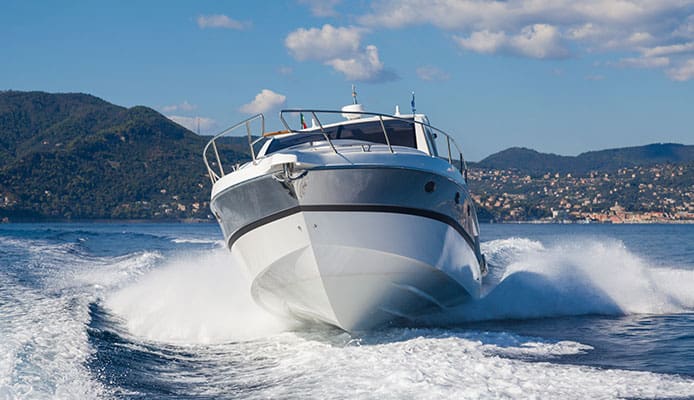
Power Rating
The power rating of a subwoofer shows you how loud it can be. Two numbers come into play here – peak (max) power and RMS power. Since the subwoofer will be on an open deck, it needs to have more power compared to a model you would install in a car.
Peak Power Rating: Measured in watts, this number represents the maximum power output that a subwoofer can achieve. This is the number you’ll usually see advertised when looking at different subwoofer models.
However, the problem here is that the subwoofer can maintain this output only for short periods, with a potential risk of getting damaged in the process. Because of this, the RMS rating is much more relevant when considering what a speaker can really do.
RMS power rating: This number represents the actual power level that you can listen to for a longer time without overburdening or damaging the subwoofer. The abbreviation RMS stands for Root Mean Square and calculates the optimal power that the woofer can handle.
While high output is important, you shouldn’t make this the only factor when choosing a subwoofer. It’s not all about how loud it can get, but also about the quality of the bass. For this reason, make sure to also pay attention to other aspects like impedance and material quality.
Impedance
Even though it’s less significant than RMS output, impedance still has an impact on the overall performance. It represents electrical resistance, and it’s measured in ohms. In simple terms, this number shows you the amount of power that your speaker can safely receive from the amplifier.
Most subwoofers on the market have an impedance somewhere between 2 and 8 ohms. Generally speaking, a unit with an impedance of 2 ohms will get more power from the amplifier compared to an 8-ohm unit. This is directly proportionate to loudness (a 2-ohm woofer is louder) but the sound quality might be greatly reduced compared to higher-impedance models.
One more thing to keep in mind here is that the impedance should match the power output of the amplifier. If it’s too low, the amplifier can overheat and get damaged. On the other hand, if it’s too high, the output tube or the transmitter can suffer. Because of this, make sure to properly match the equipment.
You might also like: Top Marine Amplifiers
Ease Of Installation
Before ordering a subwoofer, it’s good to plan where you’re going to put it and how you’re going to install it. Of course, it’s ideal if it can be installed with the existing fixtures and fittings, but this is not always the case. For this reason, we advise that you do some careful measuring so you don’t regret it later.
As you’ve had the chance to see, subwoofers come in many different shapes and sizes. A standard-sized unit measures 10 inches in diameter and has a depth anywhere between 3 and 5 inches. While most models come in this size, you’ll also be able to find a 6 inch marine subwoofer if you need to save space, as well as 12-inch models if you need some extra power.
Mounting the unit should be done properly because it can significantly impact the performance. Some subwoofers require a dedicated box to produce high-quality bass, while others work just fine without one (free air models). On top of this, some models (like the Bazooka subwoofers) don’t really require any installation.
Marine-Grade Material Quality
Since they will be used on a boat, marine subwoofers are going to be exposed to various outdoor conditions. Marine-grade material quality means that a unit is durable enough to withstand these circumstances. The best marine subwoofers are waterproof, shock-resistant, and can withstand prolonged sun exposure.
For best results, the casing should be made of polypropylene of ABS plastic, with synthetic rubber gaskets on the openings to prevent any leaks inside. Also, the hardware should be made of stainless steel so it doesn’t corrode from saltwater.
FAQs
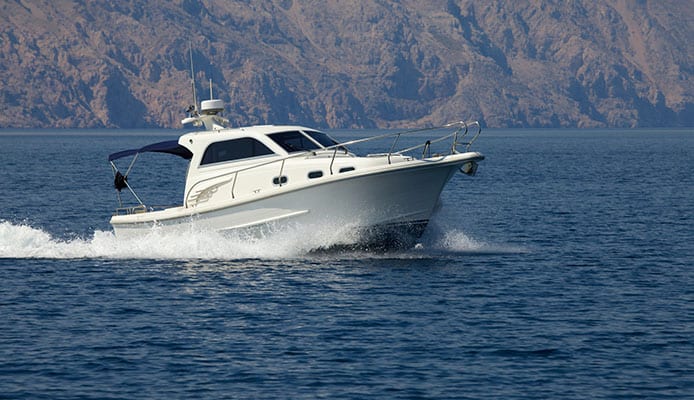
Q: Which Is Better 2 Ohm Or 4 Ohm Subwoofer?
This depends on what type of sound you want to achieve. In general, a 2-ohm subwoofer will usually be louder, while a 4-ohm model will deliver better sound quality.
An ohm is a unit of resistance and, in this case, it’s the resistance to the audio signal coming from the amplifier. Two ohms offer very little resistance so a lot of power goes through, resulting in a loud sound. On the other hand, 4 ohms are more difficult to bypass, making the sound weaker but much more concentrated (higher quality).
Q: Which Subwoofer Is Best For Bass?
This is difficult to say, as it depends on many different factors. However, you should always look for a model that uses high-quality components to deliver the sound. Like we’ve said, RMS output is more important than the advertised max output, and the subwoofer should work well with lowest-frequency sounds.
Q: How Can I Make My Subwoofer Sound Better?
One of the best things you can do is carefully choose a spot that will maximize the bass output, and then properly install the subwoofer. As you probably know, some models require a box when installing while others don’t, which can also impact the bass quality. Also, an appropriate amplifier will provide the right amount of power to get the most out of your woofer.
Globo Surf Overview
The best marine subwoofer will make the sound of your speakers fuller and really change the way you experience music on the water. We hope that our reviews have pointed in you in the right direction, so you can get a chest-pounding bass that will put a smile on your face.



